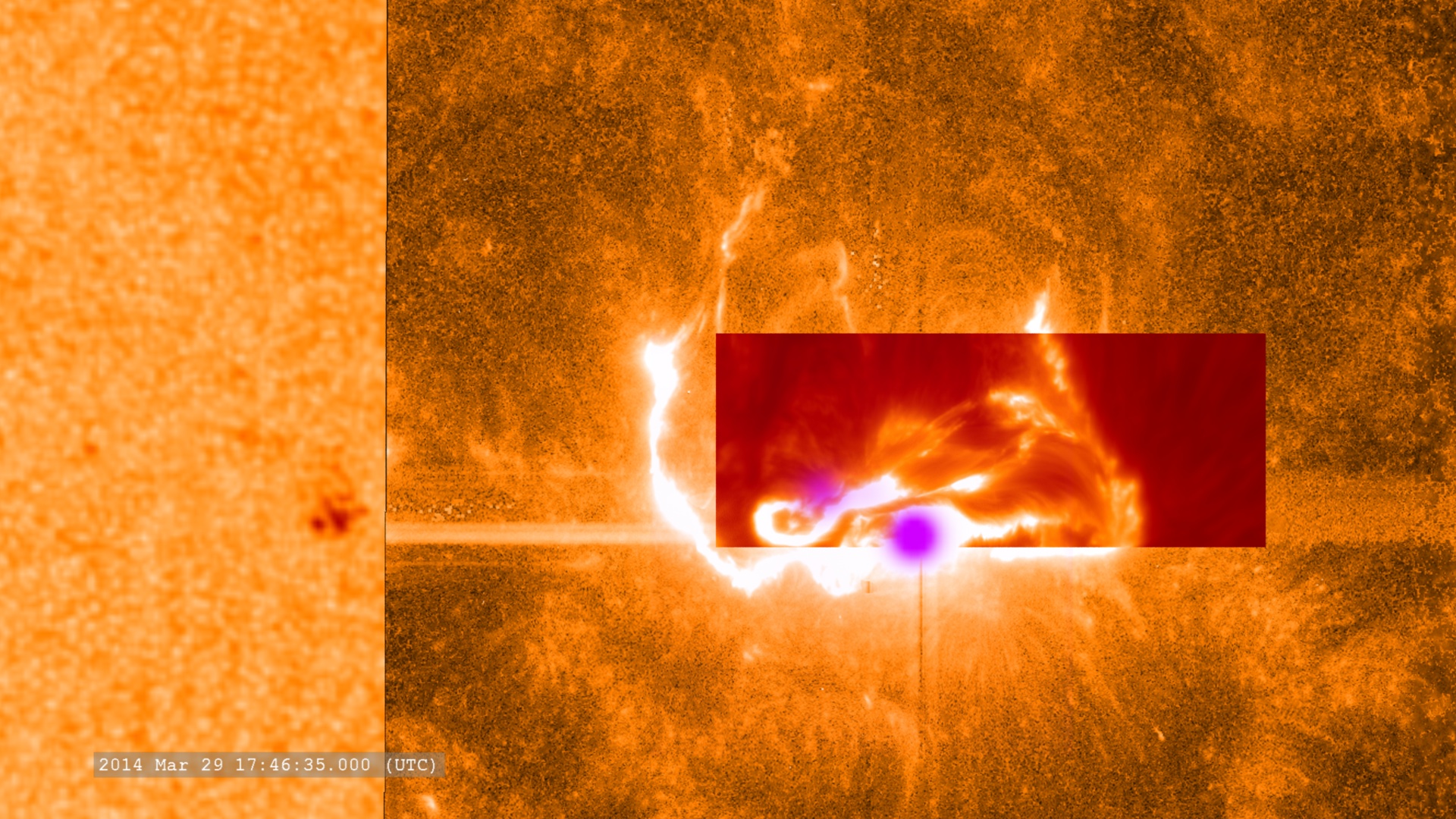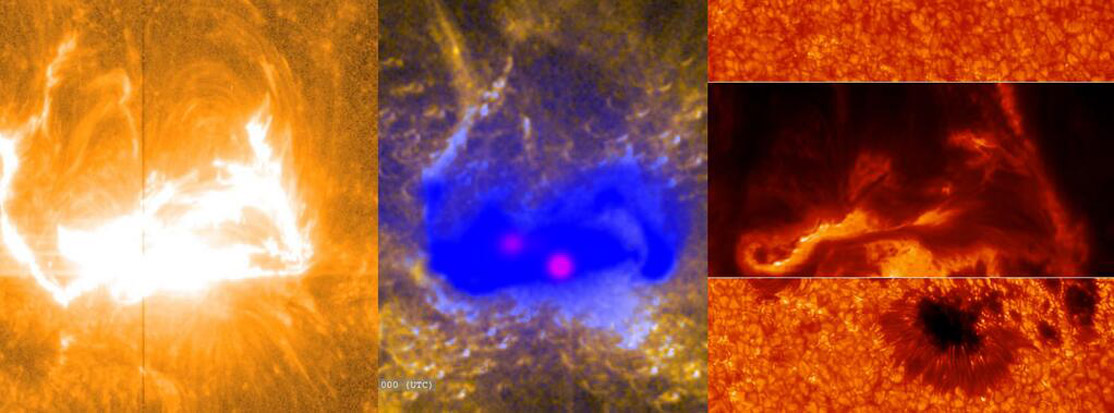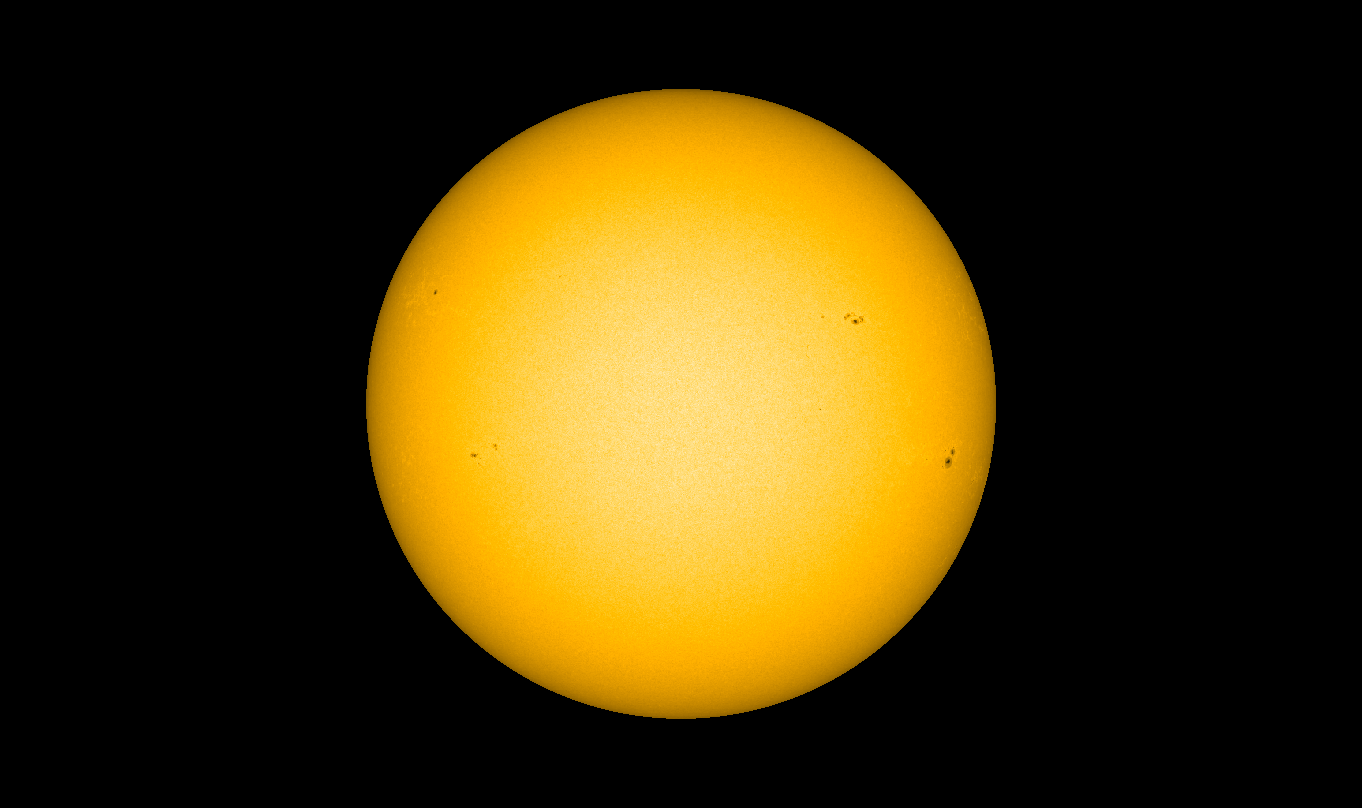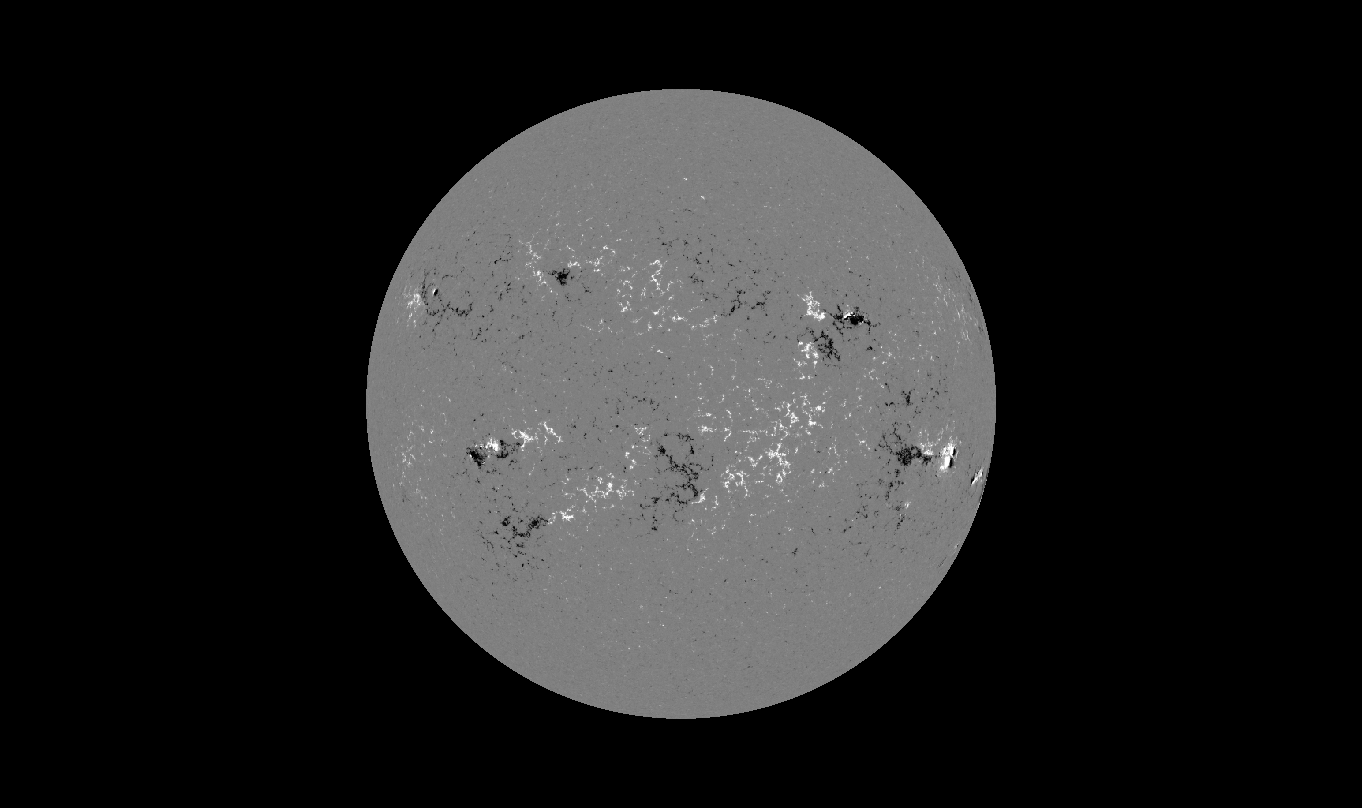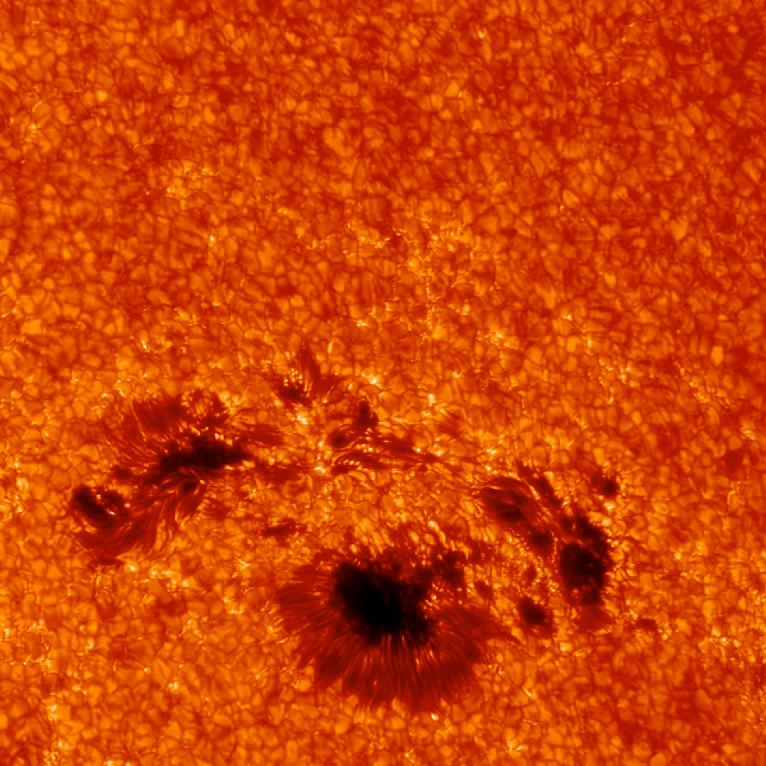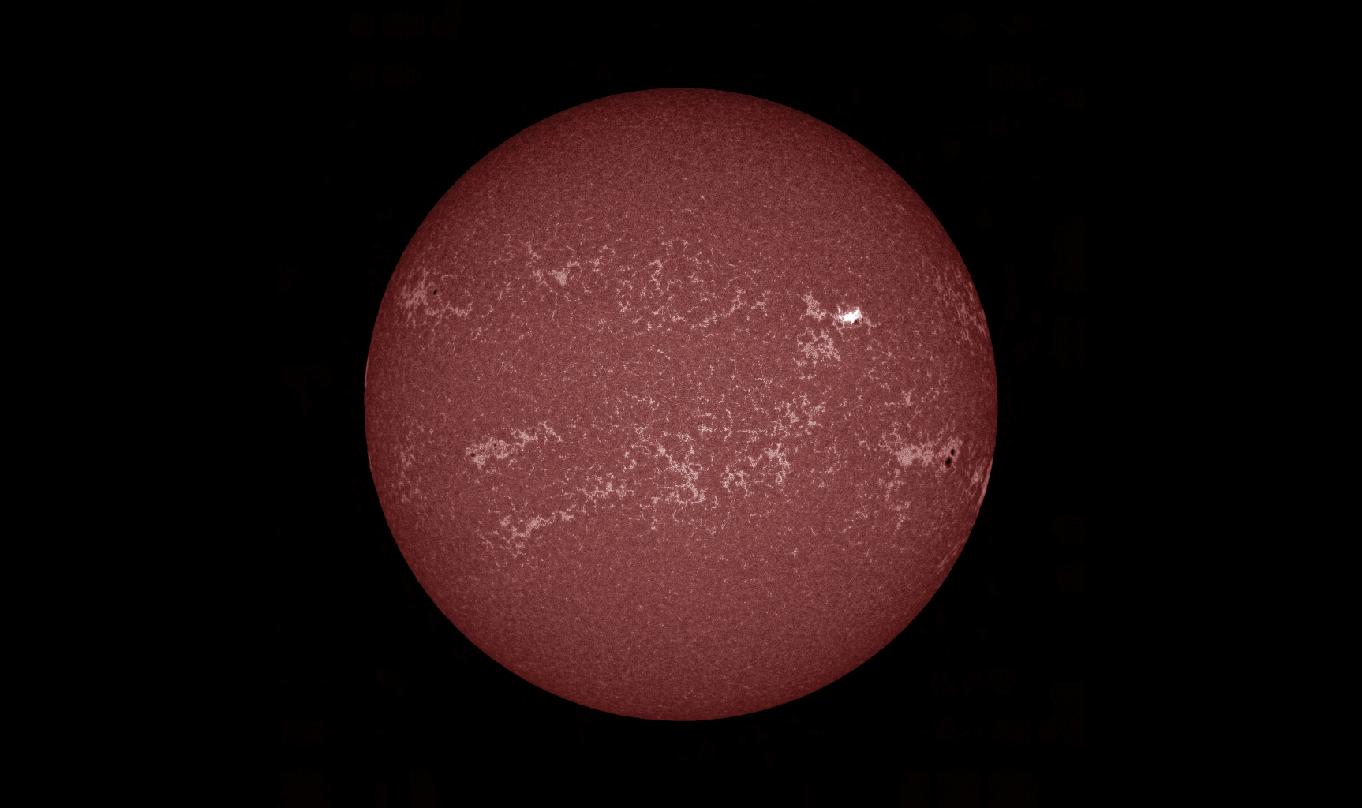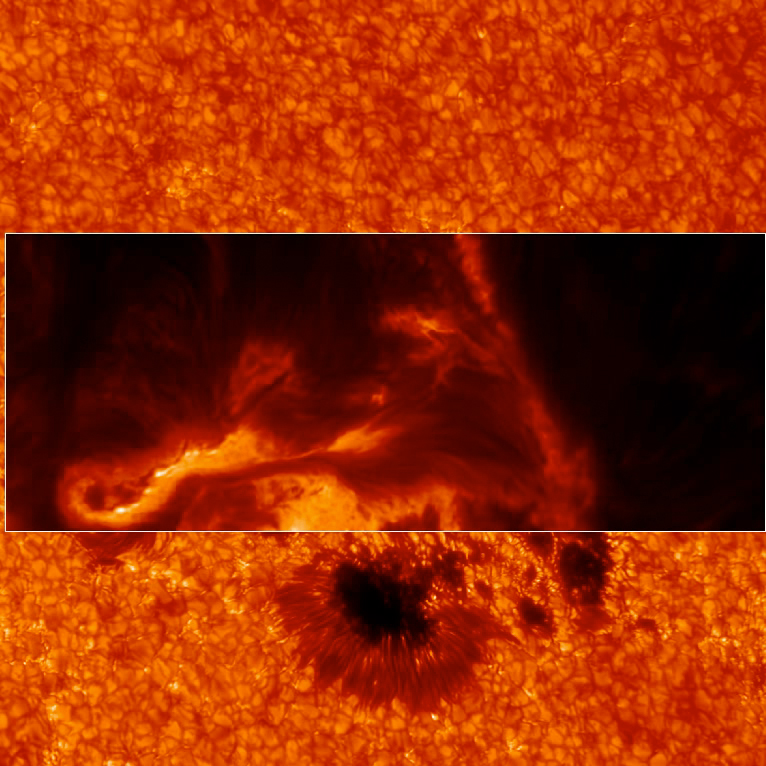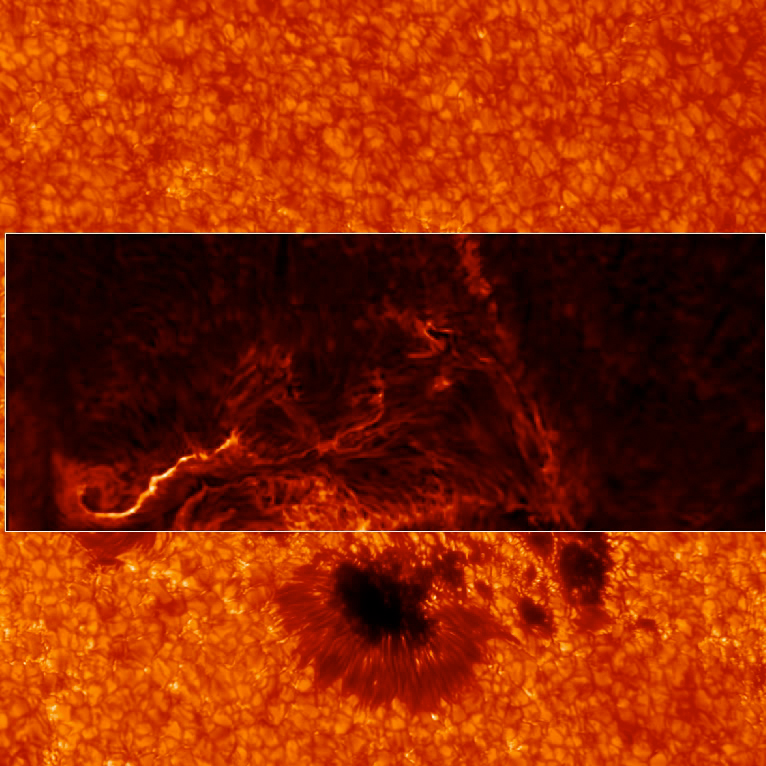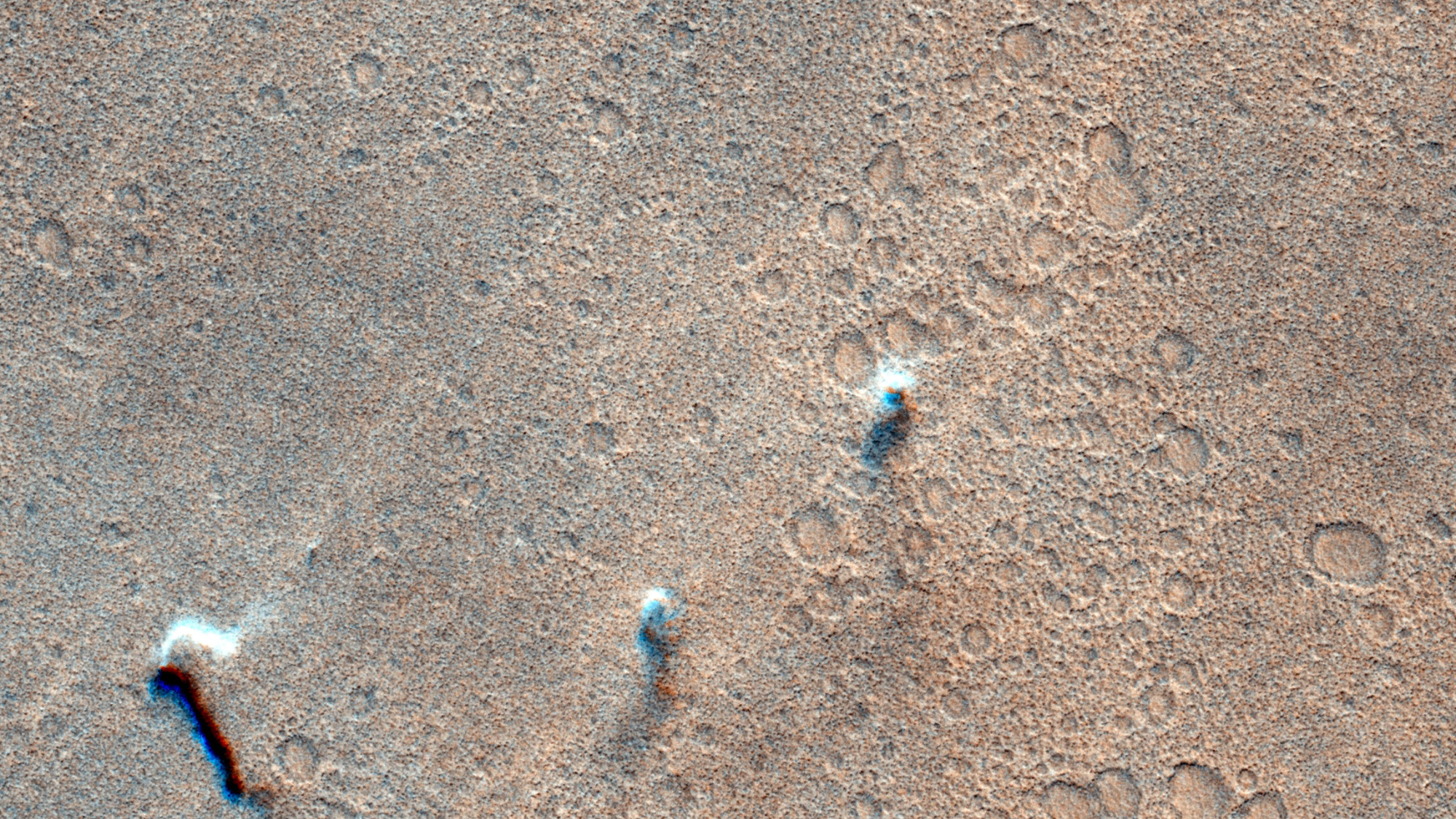Solar Flare Photos of March 29, 2014: See the Best-Observed Sun Storm Ever (Gallery)
March 29 X-class Flare
On March 29, 2014, an X-class flare erupted from the right side of the sun and vaulted into history as the best-observed flare of all time. See the photos here. HERE: This combined image shows the March 29, 2014, X-class flare as seen through the eyes of different observatories. SDO is on the bottom/left, which helps show the position of the flare on the sun. The darker orange square is IRIS data. The red rectangular inset is from Sacramento Peak. The violet spots show the flare's footpoints from RHESSI. [Read the Full Story and Watch the Video Here]
Monster Solar Flare of March 29, 3 Views
This image shows three of five different views of a monster X-class solar flare on the sun on March 29, 2014. The sun storm was the best-observed solar flare in history, according to NASA. [Read the Full Story and Watch the Video Here]
Sun's Surface on March 29
An image of the sun's surface, or photosphere, at 1:48 p.m. EDT on March 29, 2014, captured by the Helioseismic Magnetic Imager on NASA's Solar Dynamics Observatory. [Read the Full Story and Watch the Video Here]
Magnetic Field Lines on X-Class Flare
NASA's Solar Dynamics Observatory captures magnetic information about the surface of the sun. Dark areas in this image from 1:48 p.m. EDT on March 29, 2014, show where magnetic field lines point into the surface during the X-class flare. The white areas show where the field lines point out. This information helps unravel the complex magnetic system on and around the sun, which can lead to large eruptive events like solar flares. [Read the Full Story and Watch the Video Here]
Magnetogram of March 29 Flare
This image of the solar surface -- captured just as the flare peaked at 1:48 p.m. EDT, by the Solar Optical Telescope on the Japan Aerospace and Exploration Agency's and NASA's Hinode spacecraft – is what's called a magnetogram. [Read the Full Story and Watch the Video Here]
Close-up of Sunspot on March 29
A closeup of the sunspot at the root of the March 29, 2014, X-class flare. [Read the Full Story and Watch the Video Here]
March 20 Solar Flare Sunspot Detail
This close-up of the sunspot underneath the March 29, 2014, flare shows incredible detail. [Read the Full Story and Watch the Video Here]
Breaking space news, the latest updates on rocket launches, skywatching events and more!
March 29 Solar Flare in Ultraviolet Light
Moving up in the solar atmosphere, the bright light of the flare becomes visible. This image from the Atmospheric Imaging Assembly on NASA's Solar Dynamics Observatory shows ultraviolet light of 1700 Angstroms. This wavelength of light shows materials with temperatures of about 4500 Kelvin, which highlights the surface of the sun and a low layer of the sun's atmosphere called the chromosphere. [Read the Full Story and Watch the Video Here]
March 29 Sunspot Detail
IBIS can focus in on different wavelengths of light, and so reveal different layers at different heights in the sun's lower atmosphere, the chromosphere. This image shows a region slightly higher than the former one. [Read the Full Story and Watch the Video Here]
March 29 Detail of Sunspot
An image from the ground-based Interferometric Bidimensional Spectrometer, or IBIS, at the National Solar Observatory's Sacramento Peak is overlaid on an image of the sun's surface. A thin bright line can be seen on the left, which is known as a flare ribbon. This flare ribbon lies right over one of the footpoints of the flare seen in other images, such as those from NASA's RHESSI. The other footpoint isn't visible in this image. [Read the Full Story and Watch the Video Here]
Progression of Solar Flare
Each of these images from the Japan Aerospace Exploration Agency's and NASA's Hinode shows a progressively higher layer of the sun's atmosphere. [Read the Full Story and Watch the Video Here]
Join our Space Forums to keep talking space on the latest missions, night sky and more! And if you have a news tip, correction or comment, let us know at: community@space.com.

Space.com is the premier source of space exploration, innovation and astronomy news, chronicling (and celebrating) humanity's ongoing expansion across the final frontier. Originally founded in 1999, Space.com is, and always has been, the passion of writers and editors who are space fans and also trained journalists. Our current news team consists of Editor-in-Chief Tariq Malik; Editor Hanneke Weitering, Senior Space Writer Mike Wall; Senior Writer Meghan Bartels; Senior Writer Chelsea Gohd, Senior Writer Tereza Pultarova and Staff Writer Alexander Cox, focusing on e-commerce. Senior Producer Steve Spaleta oversees our space videos, with Diana Whitcroft as our Social Media Editor.
